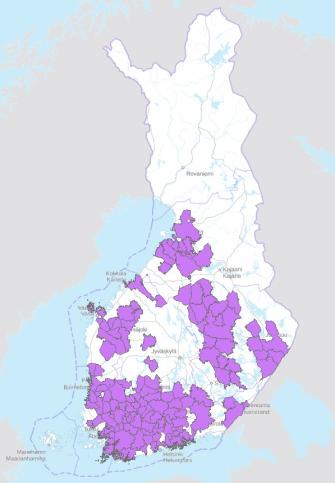National reporting of waste data

The Finnish Environment Institute is responsible for national waste reporting in accordance with the Waste Directive, the Landfill Directive and the Sludge Directive. The reports are compiled annually, as a general rule, in June-August. Most of the information is obtained from Statistics Finland's waste statistics; in addition, for example the environmental protection information system YLVA is utilized. Some of the calculations are done by the Finnish Environment Institute.
Reporting of the Waste Directive requires information on municipal waste, reuse, construction and demolition waste, and waste oil. In addition, the Finnish Environment Institute produces an updated quantity estimate of home composting, which is used in the waste statistics published by Statistics Finland.
For municipal waste, the total and processing quantities, the recycling rate and the disposal of municipal waste in landfills are reported. Product group-specific quantity data and a list of national measures promoting reuse are reported on reuse. For construction and demolition waste, the quantities and treatment data is reported. Regarding waste oils, waste oils put on the market, generated and processed are reported by oil type.
Biodegradable municipal waste placed in landfills is reported in accordance with the Landfill Directive.
Reporting according to the Sludge Directive consists of sludge analysis data and sludge quantities. It concerns only municipal wastewater. In addition, reporting requires the production of location information for those sites that have received sludge for farming.
All annual reporting data and quality reports are available from the metadata service CKAN of the Finnish Environment Institute: https://ckan.ymparisto.fi/organization/syke-reporting.
You may examine the reporting data from the attached Excel or the graphs below.

The reporting provisions of the EU sewage sludge directive on agricultural use require the collection of spatial data. The map in question shows the geographic data material reported by Finland.
The map shows in purple the municipalities where treated municipal sewage sludge has been spread for agricultural use in 2024. Regionally, sludge has been spread especially in southern and southwestern Finland, northern Ostrobothnia and northern Savo. The sludge application areas vary somewhat each year.
The material has been compiled based on the information obtained from the YLVA information system, and the starting material for the spatial data is the administrative areas of the land survey.
Read more
Municipal waste by waste management operations (Eurostat)
Finnish Environment Institute: Collection, transport and brokerage of waste within Finland
Finnish Environment Institute: National Waste Plan
Waste Statistics (Statistics Finland)
Contact
Enquiries concerning the national reporting of waste data can be sent to jateraportoinnit@syke.fi.